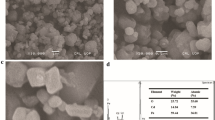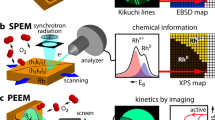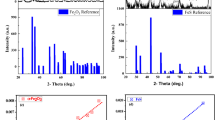Abstract
IN the course of an investigation of the oxides of rhenium in progress in these laboratories, we have sought to repeat the preparation of the highest oxide described by I. and W. Noddack,1 Re2O8, which was obtained by them on heating the heptoxide below 150° in a stream of oxygen. The yellow heptoxide used in the Noddacks' preparations melted at 220° and gave rise to a white sublimate at 150° described as Re2O8 and possessing the property of decolorising acidified potassium permanganate. The melting point of our specimens of heptoxide has invariably been about 300°,2 and this material failed to give any evidence of a white sublimate when heated in a stream of oxygen to temperatures below its melting point. Moreover, quantitative experiments repeatedly showed that its formation was unattended by any increase in weight. The sublimate was identical in crystalline form with the heptoxide, was decidedly yellow, and melted to a yellow solid, also indistinguishable from the heptoxide.
This is a preview of subscription content, access via your institution
Access options
Subscribe to this journal
Receive 51 print issues and online access
$199.00 per year
only $3.90 per issue
Buy this article
- Purchase on SpringerLink
- Instant access to full article PDF
Prices may be subject to local taxes which are calculated during checkout
Similar content being viewed by others
References
Z. anorg. Chem., 181, 37; 1929.
Biltz and Lehre, Nachr. Ges. Wiss., 191; 1931.
Author information
Authors and Affiliations
Rights and permissions
About this article
Cite this article
BRISCOE, H., ROBINSON, P. & RUDGE, A. The Highest Oxide of Rhenium. Nature 129, 618 (1932). https://doi.org/10.1038/129618b0
Issue date:
DOI: https://doi.org/10.1038/129618b0



